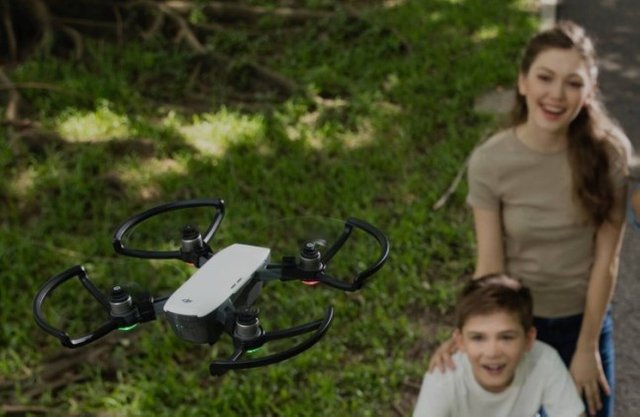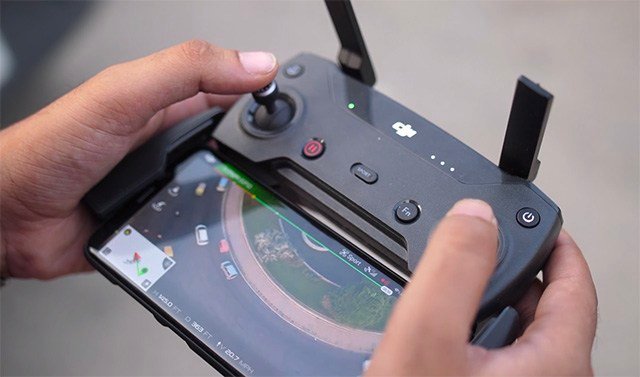
While people in Europe, US and Canada have enjoyed a high level of freedom with commercial or hobby drones, India has so far remained mum on the new technology, at least officially speaking.
Earlier this year, the Director General of Civil Aviation released a draft drone policy to kickstart the era of drones in the country, and now, the government has created a better and more planned policy on the usage of drones in the country. The ‘Drone Regulation 1.0’ as the document is called, sets the guidelines for the operation of drones in Indian airspace, for both commercial and hobbyist flyers.
So, if you’re a drone enthusiast like most of us here at Beebom, or if you’ve been planning on a commercial application for drones, it’s important that you understand exactly what the new Drone Regulations 1.0 means for you.
Drone Categorization
To make these laws easier to understand and differentiate between, the DGCA has divided unmanned aircrafts into five categories, each with its own set of rules. The five categories are:
Nano: weighing less than or equal to 250g
Micro: weighing more than 250g and less than or equal to 2kg
Small: weighing more than 2kg and less than or equal to 25kg
Medium: weighing more than 25kg and less than or equal to 150kg
Large: weighing over 150kg
Operational Requirements for Drones
Based on the weight of the drones, things vary a little, especially for Nano and Micro drones. Let’s break it down a little to make things easier to understand.
Registering the Drone
Technically speaking, this is called ‘Unique Identification Number’ in the Regulation document, but it’s basically a registration number for your drone. Every drone that is intended to be flown in Indian airspace will have to be registered. However, certain drone types and agencies do not need to get any registrations.

Who Doesn’t Need Registrations?
If you’re using a Nano drone (weight less than or equal to 250 grams) you don’t need to get it registered if you fly it under a limit of 50 feet
Drones owned and operated by the NTRO, ARC, and Central Intelligence Agencies don’t need to be registered.
Registering the Pilot
Again, the actual, technical name for registering the pilot is ‘Unmanned Aircraft Operator Permit’ or ‘UAOP’. Essentially, the person who intends to fly the drone needs to get a permit as well. However, here too, certain drones and agencies don’t need to get the permit.
Who Doesn’t Need Permits?
If you’re flying a Nano drone under 50 feet, you don’t need to get the Unmanned Aircraft Operator Permit.
If you’re flying a Micro drone under 200 feet, you don’t need to get the Unmanned Aircraft Operator Permit. However, you will still need to get the Unique Identification Number for the drone itself.
Drones owned and operated by the NTRO, ARC, and Central Intelligence Agencies don’t need to get permits.
Mandatory Features in Drones
In order to fly a drone in India, you need to ensure that your drone is equipped with certain mandatory safety features. These have also been specified in the regulation document. Here are all the features your drone needs to have in order to be permitted in the Indian airspace:
Global Navigation Satellite System (GNSS) should be available on the drone.
The drone should have a Return to Home feature.
The drone should have flashing anti-collision lights.
The drone should be RFID and GSM SIM card compliant, or have the No Permission No Takeoff feature.
The drone should have a fire resistant plate with the registration number on it.
The drone should have a flight controller with flight data logging capability.
Besides this, any drone that is going to be used in controlled airspace upto a height of 400 metres, needs to have the following additional features as well:
SSR transponder
Barometric equipment
Geo-fencing capability
Detect and avoid capability.
However, as it is with almost every other requirement, these don’t apply to Nano and Micro drones flying in uncontrolled airspace as long as they stay under 50 feet and 200 feet respectively. Above those limits, even these drones will also need to have the features and permits mentioned above.
Restrictions on Drone Usage
In order to ensure the national security of the country, the government has also imposed some general restrictions on the usage of drones.
You can’t fly a drone within a radius of 3km from any civil, private, or defence airports.
In Delhi, Mumbai, Chennai, Kolkata, and Bangalore, you can’t fly a drone within a radius of 5km from any civil, private, or defence airports.
No drones can be flown within permanent or temporary Prohibited, Restricted and Danger Areas.
No drones can be flown within a distance of 25km of international borders. This includes the Line of Control (LOC), Line of Actual Control (LOAC), and Actual Ground Position Line (AGPL).
You can’t fly a drone further than 500m into the sea from the coastline.
You can’t fly a drone within a range of 3km from any military facilities or installations.
No drones can be operated within a range of 5km from Vijay Chowk in Delhi.
You can’t fly a drone from a moving platform, which includes cars, ships, and aircrafts.
Ready to Fly a Drone in India?
These new regulations will go into effect from December 1, 2018, so if you’re looking to fly a drone in the country, make sure you get your drone registered, and that you get yourself a permit to fly drones in India.
Also, keep in mind that you are not breaking any laws and follow the restrictions mentioned because you might find yourself in legal trouble otherwise, especially since these are new rules. However, as long as you follow the rules, and your drone is registered, you should have no issues flying the drone around the country.
While flying a drone in India isn’t going to be as easy as it is in places like the US, it’s important to understand that India’s security needs do make it more difficult for the government to give free reign over drone usage in the country, especially near military installations. If you’re interested, you can read the entire document on the new drone regulations here.
TAGSDrone Regulations 1.0
@khanwriting, I gave you a vote!
If you follow me, I will also follow you in return!
Enjoy some !popcorn courtesy of @nextgencrypto!
Downvoting a post can decrease pending rewards and make it less visible. Common reasons:
Submit
Downvoting a post can decrease pending rewards and make it less visible. Common reasons:
Submit
sure mate upvote returned and now following you
Downvoting a post can decrease pending rewards and make it less visible. Common reasons:
Submit
Hi! I am a robot. I just upvoted you! I found similar content that readers might be interested in:
https://beebom.com/drone-policy-india-2018/
Downvoting a post can decrease pending rewards and make it less visible. Common reasons:
Submit